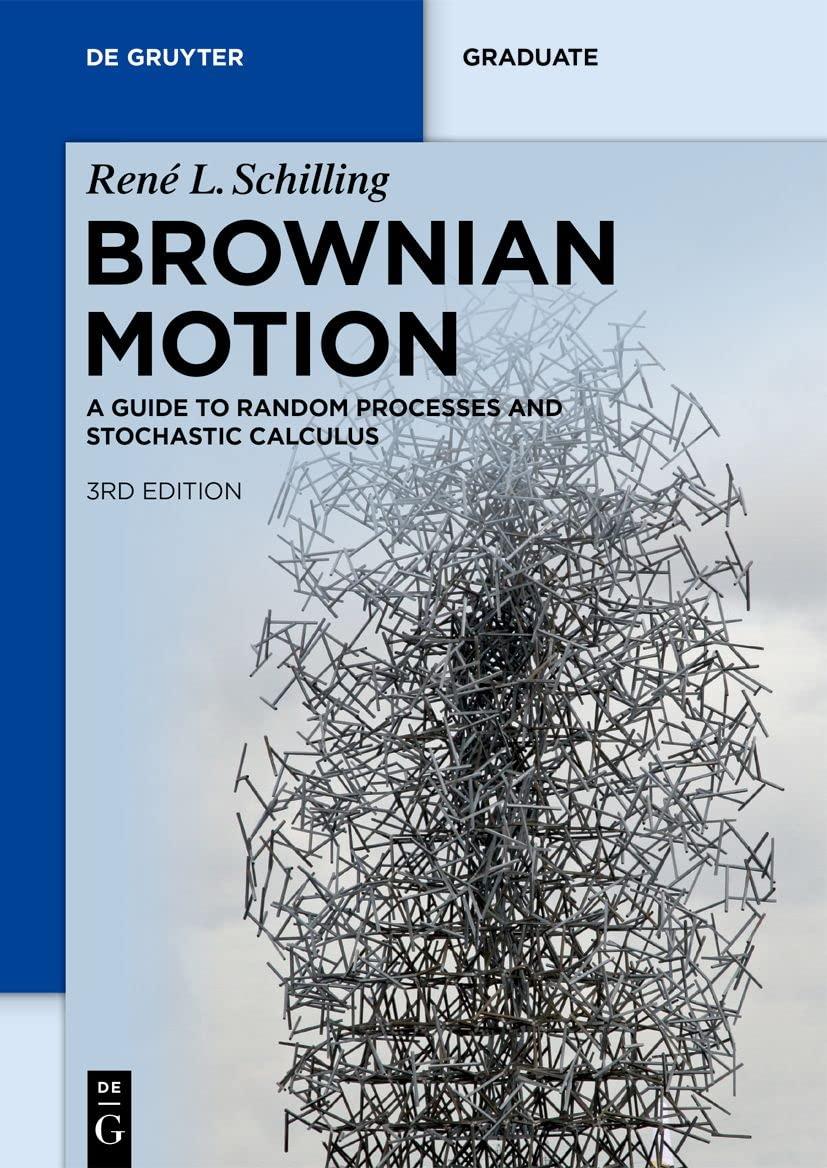Let ((A, mathfrak{D}(A))) be the generator of a (mathrm{BM}^{d}). Adapt the arguments of Example 7.25 and show
Question:
Let \((A, \mathfrak{D}(A))\) be the generator of a \(\mathrm{BM}^{d}\). Adapt the arguments of Example 7.25 and show that \(\mathcal{C}_{\infty}^{2}\left(\mathbb{R}^{d}\right) \varsubsetneqq \mathfrak{D}(A)\) for any dimension \(d \geqslant 3\). Instructions. Use in Example \(7.25 d\)-dimensional polar coordinates: \(y_{1}=r \sin \phi \sin \theta_{1} \cdot \ldots \cdot \sin \theta_{d-2}, y_{2}=r \cos \phi \sin \theta_{1} \cdot \ldots \cdot \sin \theta_{d-2}, \ldots y_{d-1}=r \cos \theta_{d-3} \cdot \sin \theta_{d-2}\), \(y_{d}=r \cos \theta_{d-2}\), where \(\left(r, \phi, \theta_{1}, \ldots, \theta_{d-2}\right) \in(0, \infty) \times(0,2 \pi) \times(0, \pi)^{d-2}\).
\[r^{d-1}\left(\sin \theta_{1}\right)^{1}\left(\sin \theta_{2}\right)^{2} \ldots\left(\sin \theta_{d-2}\right)^{d-2}\]
The calculations will lead to the following integrals \((|x|<1)\)
\[\int_{0}^{\pi} \frac{(\sin \theta)^{d-2}}{\left(1+x^{2}-2 x \cos \theta\right)^{(d-2) / 2}} d \theta \text { and } \int_{0}^{\pi} \frac{(\sin \theta)^{d}}{\left(1+x^{2}-2 x \cos \theta\right)^{(d-2) / 2}} d \theta\]
which have the values \(a_{d}\) and \(b_{d} x^{2}+c_{d}\), respectively, with constants \(a_{d}, b_{d}, c_{d} \in \mathbb{R}\) depending on the dimension, Gradshteyn-Ryzhik
Remark. A simple evaluation of the integrals \({ }^{\star}\) ) is possible only in \(d=3\). For \(d>3\) these integrals are most elegantly evaluated using Gegenbauer polynomials, and the discussion on stack exchange http://math.stackexchange.com/questions/395336.
Step by Step Answer:

Brownian Motion A Guide To Random Processes And Stochastic Calculus De Gruyter Textbook
ISBN: 9783110741254
3rd Edition
Authors: René L. Schilling, Björn Böttcher





